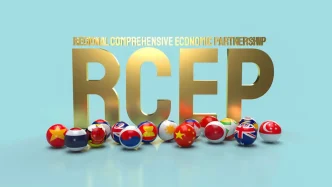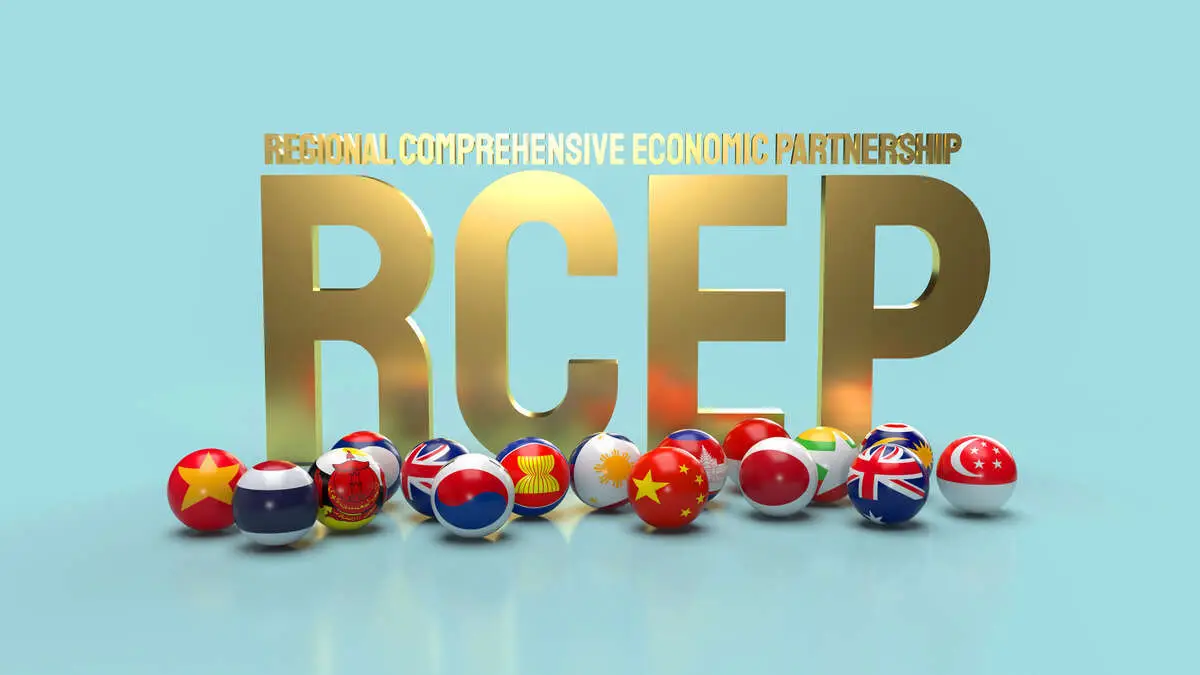As global trade faces increasing fragmentation and protectionist pressures, Indonesian President Prabowo Subianto and Malaysian Prime Minister Anwar Ibrahim are seizing a critical moment to reinvigorate the Regional Comprehensive Economic Partnership (RCEP), the world’s largest free trade agreement. Despite its monumental scope, encompassing 30 percent of global GDP and a market of over 2.3 billion people, the RCEP has remained largely dormant in Indonesia since coming into force on January 1, 2022. With a key ASEAN summit looming in Kuala Lumpur this October, the two leaders are poised to rally regional support to unlock the pact’s transformative potential.
A Missed Opportunity in Indonesia
Indonesia, Southeast Asia’s largest economy, has been a signatory to the RCEP since its inception, joining the 15-member bloc that includes all 10 ASEAN nations alongside economic heavyweights like China, Japan, South Korea, Australia, and New Zealand. The agreement promises to boost regional incomes by an estimated US$653 billion by 2030, a figure that underscores its potential to reshape the Asia-Pacific economic landscape. Yet, in Indonesia, the RCEP remains more of a paper commitment than a tangible driver of growth.
President Prabowo Subianto, who took office with a mandate to accelerate economic development, has instead prioritized other international engagements. His administration swiftly pursued membership in the non-binding BRICS grouping—joining Brazil, Russia, India, China, South Africa, and newer members like Egypt and Saudi Arabia as of January 6, 2025. Additionally, Indonesia has signed on to the Japanese-led Comprehensive and Progressive Trans-Pacific Partnership (CPTPP), another trade framework with significant long-term promise but limited immediate impact for a developing economy like Indonesia.
While these initiatives signal Indonesia’s ambition to diversify its global economic ties, critics argue they distract from the more immediate benefits of the RCEP. The agreement’s legally binding framework offers a ready-made platform to enhance trade, reduce tariffs, and strengthen supply chains across the region—a critical need as the United States and China continue their tariff war, disrupting global markets. For Indonesia, fully activating the RCEP could provide a buffer against such external shocks, fostering resilience in a time of uncertainty.
A Strategic Bilateral Push
The urgency to revive the RCEP gained momentum during a bilateral meeting between President Prabowo and Prime Minister Anwar Ibrahim on June 27, 2025, at the Merdeka Palace in Jakarta. The two leaders, representing key ASEAN economies, agreed to collaborate on leveraging the upcoming ASEAN summit in Malaysia as a platform to prioritize the trade pact. Their shared vision is to transform the RCEP from a symbolic agreement into a cornerstone of regional economic integration.
This commitment comes at a pivotal moment. The Kuala Lumpur summit in October 2025 will bring together leaders from all RCEP member states, including Chinese President Xi Jinping, Japanese Prime Minister Shigeru Ishiba, South Korean President Lee Jae-myung, Australian Prime Minister Anthony Albanese, and New Zealand Prime Minister Christopher Luxon. Such a gathering offers a rare opportunity for high-level coordination, allowing leaders to articulate shared trade norms and mount a unified defense against the rising tide of protectionism worldwide.
For Indonesia and Malaysia, the summit represents more than just a diplomatic event—it is a chance to lead ASEAN in harnessing the collective influence of the Asia-Pacific region. As global economic fragmentation deepens, with nations increasingly turning inward, the RCEP could serve as a powerful counterweight, promoting open trade and economic cooperation. Prabowo and Anwar’s joint push signals a recognition that regional unity is essential to navigate these turbulent waters.
Operationalizing the RCEP: Challenges and Opportunities
Despite its promise, the RCEP’s implementation has faced significant hurdles in Indonesia. Bureaucratic inertia, lack of public awareness, and competing policy priorities have all contributed to the agreement’s underutilization. While the pact is legally binding, its benefits—such as streamlined customs procedures and reduced trade barriers—require active policy alignment and coordination at the national level, steps that Indonesia has yet to fully undertake.
President Prabowo has been urged to direct his key ministers to address these gaps. Foreign Minister Sugiono is expected to collaborate with his Malaysian counterpart, Mohamad Hasan, during the ASEAN foreign ministerial meeting and the ASEAN Regional Forum (ARF) in Kuala Lumpur next week. Their agenda will likely focus on initiating discussions with ASEAN peers to outline concrete steps for realizing the RCEP’s potential. This includes harmonizing trade regulations, improving market access for member states, and ensuring that smaller economies within the bloc are not overshadowed by larger players like China and Japan.
Equally critical is the role of Coordinating Economy Minister Airlangga Hartarto, a veteran of the RCEP negotiations who represented Indonesia from the agreement’s early stages through to its finalization in 2022. Airlangga recently highlighted the strategic collaboration between Prabowo and Anwar, emphasizing their intent to use ASEAN as a platform to strengthen ties with major RCEP partners. His expertise positions him as a key figure in translating high-level commitments into actionable policies.
The stakes are high. Collectively, the RCEP’s 15 economies account for US$25.8 trillion in GDP, representing nearly a third of global economic output and trade. For Indonesia, deeper integration into this bloc could unlock new markets for its exports—ranging from palm oil to textiles—while attracting foreign investment into its manufacturing and infrastructure sectors. Moreover, the agreement’s rules of origin, which allow products to be considered “regional” if they meet certain production criteria within member states, could bolster Indonesia’s position in global supply chains.
Global Context: A Call for Regional Leadership
The renewed focus on the RCEP comes against a backdrop of escalating global trade tensions. The ongoing tariff war between the United States and China has disrupted supply chains and raised costs for countries like Indonesia, which rely heavily on exports to both markets. Meanwhile, protectionist policies in other parts of the world threaten to further fragment the global economy, making regional trade agreements like the RCEP more vital than ever.
For ASEAN, the RCEP offers a chance to assert leadership in defending open trade principles. As a bloc, ASEAN has long championed economic integration, and the RCEP builds on this legacy by linking Southeast Asia with some of the world’s largest economies. However, realizing this vision requires political will and coordination—qualities that Prabowo and Anwar appear determined to demonstrate.
The Kuala Lumpur summit could serve as a turning point, not only for Indonesia and Malaysia but for the entire Asia-Pacific region. A unified stance on the RCEP would send a powerful message to the world: that amidst rising protectionism, the region remains committed to economic openness and collaboration. For Indonesia, in particular, prioritizing the RCEP could mark a shift from symbolic international engagements to tangible economic gains.
Looking Ahead: A Test of Commitment
As preparations for the ASEAN summit intensify, the onus is on President Prabowo to ensure that Indonesia plays a leading role in operationalizing the RCEP. His openness to constructive policy ideas, as noted by regional observers, suggests a willingness to pivot toward this critical trade pact. However, translating rhetoric into action will require sustained effort, both domestically and within ASEAN.
For now, the partnership between Indonesia and Malaysia offers a glimmer of hope. By aligning their efforts, Prabowo and Anwar have the potential to galvanize regional support for the RCEP, unlocking economic benefits that have remained elusive for far too long. As the global economic landscape grows increasingly uncertain, the question remains: will ASEAN seize this moment to chart a new path for trade and cooperation in the Asia-Pacific?
















